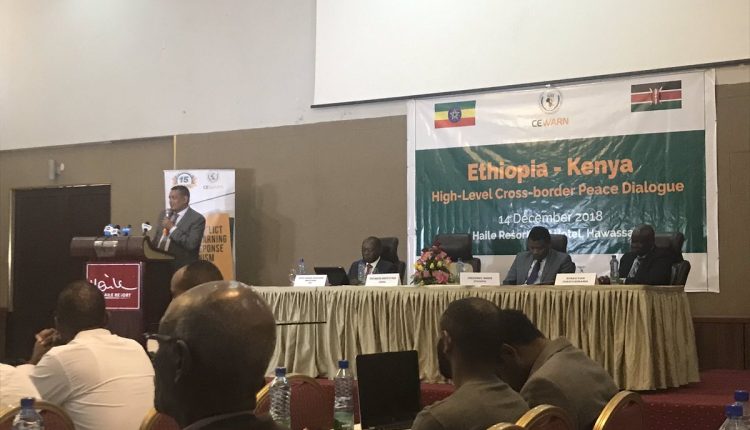The Ethiopia-Kenya High-level Cross-border Peace Dialogue was held at the end of last week (December 14-15) in Hawassa, the capital of Ethiopia’s Southern Nations, Nationalities and Peoples’ Regional State. The dialogue was organized by IGAD’s Conflict Early Warning and Response Mechanism (CEWARN). It was led by Zeinu Jamal, State Minister of Peace of Ethiopia, Peter K. Thuku, Head of Kenya’s National Conflict Early Warning Response Unit (CEWERU), representing the Minister of Interior and Coordination of National Government of Kenya, and as the Director of CEWARN, Camlus Omogo. High-level officials from the adjoining counties and regional states of both countries were also present and, importantly, the dialogue brought together government officials, CSOs and community representatives. The main objective of the dialogue was to improve political support and partnership in addressing cross-border conflicts near Moyale/Moyale and in the South Omo/Turkana areas.
The Governments of Ethiopia and Kenya signed an ″Integrated Program for Sustainable Peace and Socio-economic Transformation: Marsabit county (Kenya) and Borana and Dawa Zones (Ethiopia) ″ in 2015. While significant progress has been made to implement this program, the current sporadic violent conflict in the area has, however, posed major challenges to its implementation. In response to recent outbreaks of violence, IGAD conducted a rapid assessment mission involving experts drawn from different programs, including CEWARN, the National Conflict Early Warning Units (CEWARUs) of both Ethiopia and Kenya, the IGAD Center for Pastoral Areas and Livestock Development (ICPALD), and representatives from local administrations.
The Ethiopia-Kenya High-level Cross-border Peace Dialogue discussed, analysed, and established common understanding of the conflicts, their causes, and the drivers as well as challenges, opportunities, and priorities for intervention. The Dialogue concluded with a joint action plan to address inter-communal violence along the common border. This includes measures to address the ongoing violent conflict, facilitation for relief support to displaced populations and host communities; strengthening existing conflict prevention, management and resolution structures at local, provincial and national levels; providing support to customary conflict resolution structures to ensure they remain effective; and providing livelihood support to borderland communities as well as facilitating regular cross-border engagement and information sharing.
